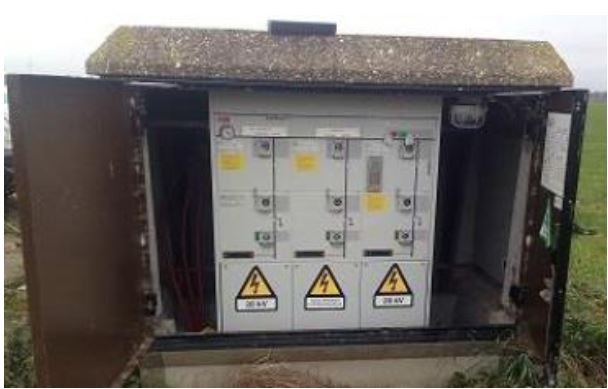
Global warming necessitates the use of SF6 alternatives in switchgear in the future.
Both the fluoroketone and fluoronitrile have a substantially higher dielectric strength than SF6, about a factor at the same pressure.
The important factor is that these gases must be mixed with a buffer to be able to use them at low temp; otherwise, they condense to the liquid state with very low vapor pressure and thus show poor dielectric strength and poor current interrupting performance. Several carrier gases have been proposed such as air, nitrogen, oxygen, CO2
Finding an appropriate concentration of fluoroketone or fluoronitrile in the carrier gas, as well as the total gas pressure becomes a trade-off between the dielectric strength obtained and the usable temp range.
A high partial pressure of fluoroketone or fluoro nitrile and a high total gas pressure give sufficient dielectric strength, but cannot cover the entire temperature range usually specified for outdoor circuit breakers and Gas Insulated Switchgear(GIS).
What is dry air insulation in medium voltage switchgear?
Dry air insulation is an alternative insulation medium used in medium voltage switchgear to substitute SF6 gas. Instead of relying on SF6 gas for arc quenching and insulation purposes, dry air, which is composed of nitrogen and oxygen, is employed as the insulating medium. Dry air insulation offers several advantages, including reduced environmental impact, improved safety, and enhanced sustainability.
Dry air insulation in medium voltage switchgear eliminates the need for SF6 gas, which is known to have a high global warming potential (GWP) and contributes to the greenhouse effect. By transitioning to dry air, the switchgear industry aims to mitigate the environmental impact associated with SF6 gas emissions.
What is C5-FK / dry air insulation in medium voltage switchgear?
C5-FK is a specific type of dry air insulation employed in medium voltage switchgear. It is a mixture of synthetic air and a fluoroketone-based gas called C5-FK. This insulation medium offers excellent dielectric properties, ensuring effective insulation and arc quenching capabilities.
C5-FK / dry air insulation provides enhanced safety features compared to traditional SF6 gas insulation. It has a low flammability and is non-toxic, reducing the risk of fire hazards and health concerns. Additionally, it has a low global warming potential, contributing to environmental sustainability.
How does solid insulation with dry air in medium voltage switchgear work?
Solid insulation combined with dry air is another alternative for medium voltage switchgear. In this approach, solid materials, such as epoxy resin or polymeric materials, are used as insulation instead of relying on gases or liquids.
The solid insulation, when combined with dry air, provides excellent electrical insulation properties, ensuring the safe and reliable operation of medium voltage switchgear. It eliminates the need for traditional insulation mediums like SF6 gas, reducing environmental impact and enhancing sustainability.
Solid insulation with dry air also offers advantages such as resistance to aging, increased resistance to environmental conditions, and improved mechanical strength. These properties make it a viable option for medium-voltage switchgear applications.
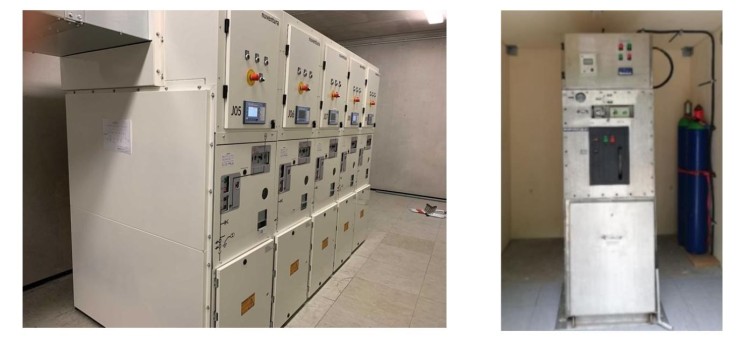
Nuventura/Secondary 36 kV GIS with air insulation and vacuum interrupter/Dry air
What is C4-FN / dry air insulation in medium voltage switchgear?
C4-FN is a specific type of dry air insulation used in medium voltage switchgear. It is a mixture of synthetic air and a fluoro-nitrile-based gas called C4-FN. This insulation medium offers excellent insulating and arc-quenching properties.
C4-FN / dry air insulation provides enhanced safety and environmental benefits. It has a low toxicity level, making it safer for operators and reducing health risks compared to traditional SF6 gas insulation. Additionally, it has a low global warming potential, contributing to the reduction of greenhouse gas emissions.
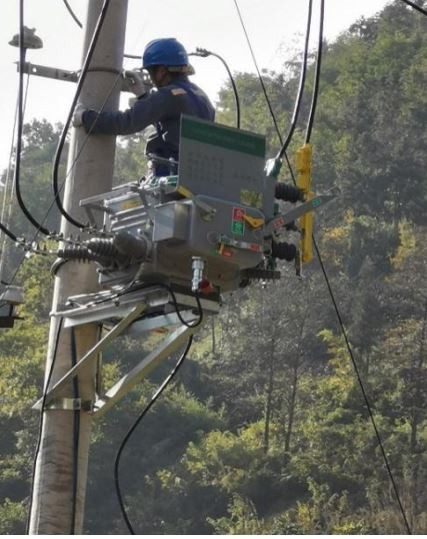
Pole-mounted switchgear/C4-FN / Air/Secondary/ 12 kV 630 A 25 kA/
What are the benefits of dry air insulation in medium voltage switchgear?
Dry air insulation in medium voltage switchgear offers several significant benefits. Firstly, it eliminates the use of SF6 gas, which has a high global warming potential. This reduction in greenhouse gas emissions supports environmental sustainability and helps combat climate change.
Secondly, dry air insulation enhances safety by minimizing the risks associated with traditional insulation mediums. Dry air has low toxicity levels, reducing health hazards for operators and enabling safer working environments.
Furthermore, dry air insulation promotes the development of more sustainable and eco-friendly solutions. It aligns with the industry’s efforts to reduce environmental impact and transition towards greener technologies, ensuring a more sustainable future for medium voltage switchgear applications.
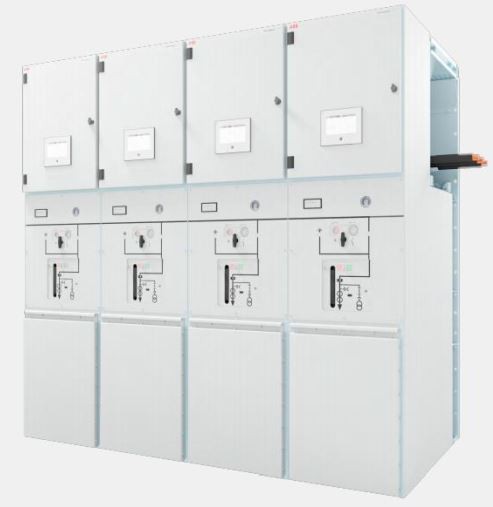
MV primary gas insulated switchgear with pressurized dry air or C5-FK gas mixture, vacuum circuit breakers/ABB company
Can dry air insulation be retrofitted into existing medium voltage switchgear?
Yes, dry air insulation can be retrofitted into existing medium voltage switchgear systems. Retrofitting involves replacing the existing SF6 gas insulation with dry air insulation, either by modifying the existing equipment or replacing it with new dry air-insulated switchgear modules.
Retrofitting offers a cost-effective solution for upgrading existing switchgear infrastructure to meet environmental and safety requirements. It allows the switchgear to continue operating while reducing its environmental impact and improving safety features.
However, it’s important to note that the feasibility of retrofitting depends on factors such as the design and condition of the existing switchgear, compatibility with dry air insulation technologies, and the specific requirements of the application. It is recommended to consult with manufacturers or qualified professionals to assess the feasibility and suitability of retrofitting dry air insulation in a particular switchgear installation.
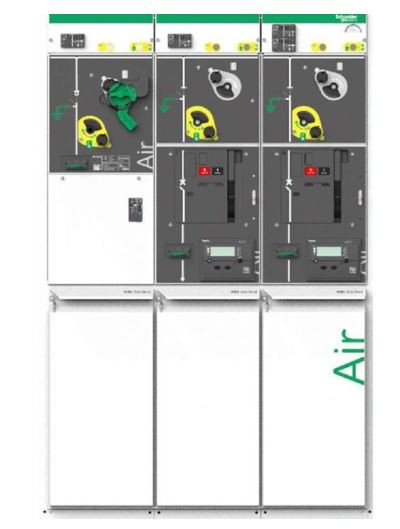
MV secondary gas insulated switchgear with pressurized dry air, shunt vacuum interrupters for load break and disconnecting, vacuum interrupters for circuit-breaking, and switch-fuse combinations available/Schneider Electric
Conclusion:
In conclusion, dry air insulation, including options like C5-FK, solid insulation, and C4-FN, provides a promising alternative to SF6 gas insulation in medium voltage switchgear. It offers environmental benefits, and improved safety features, and contributes to the industry’s sustainability goals. Whether through retrofitting or new installations, dry air insulation plays a vital role in shaping a greener and more efficient future for medium-voltage switchgear applications.



